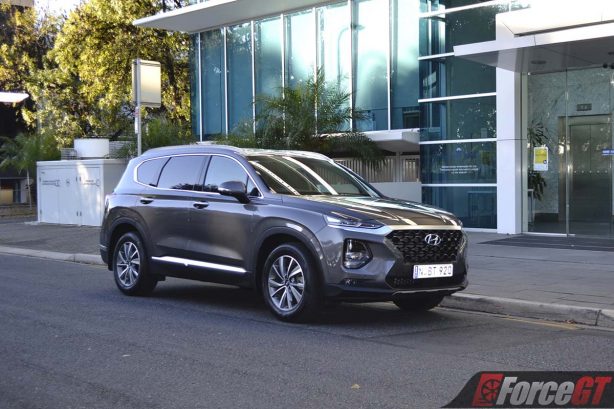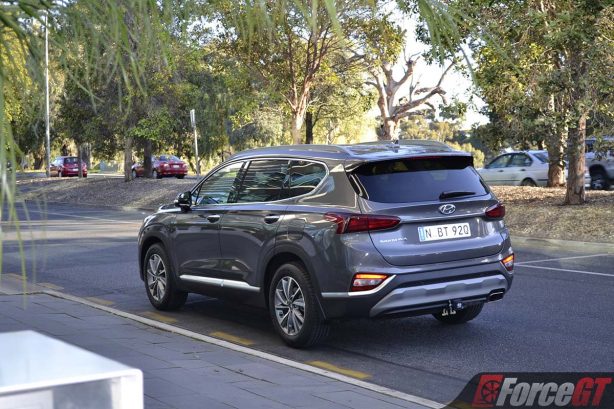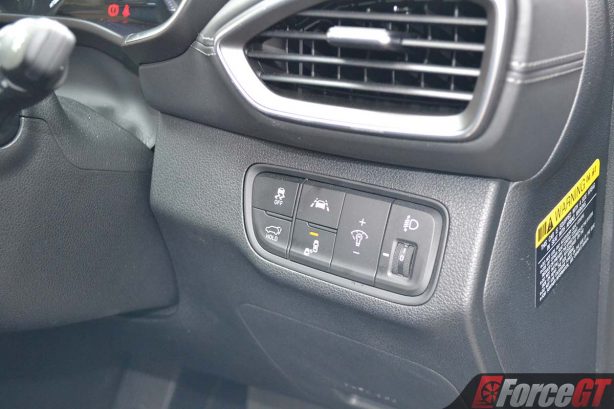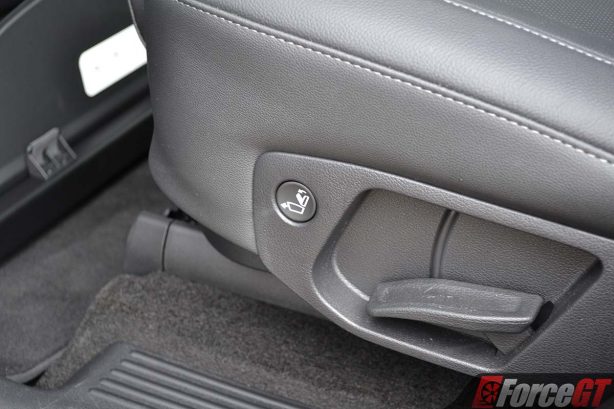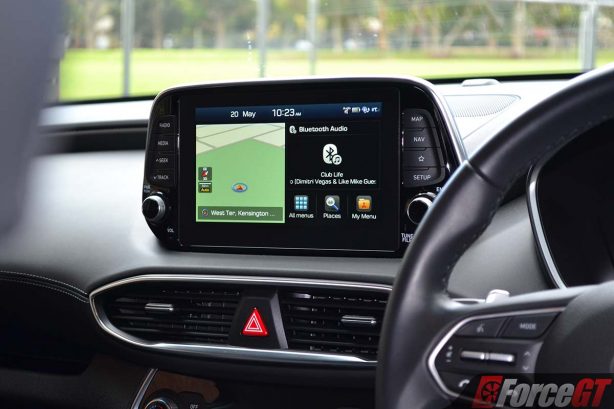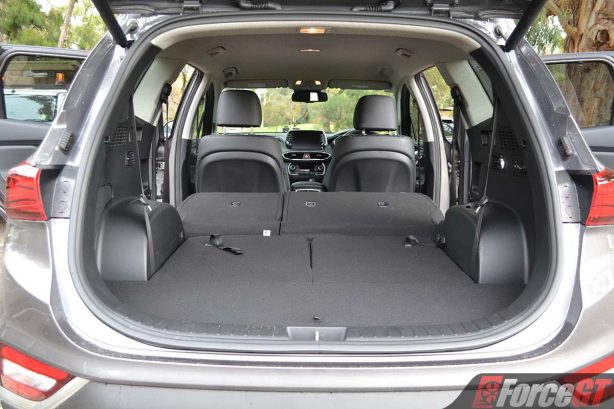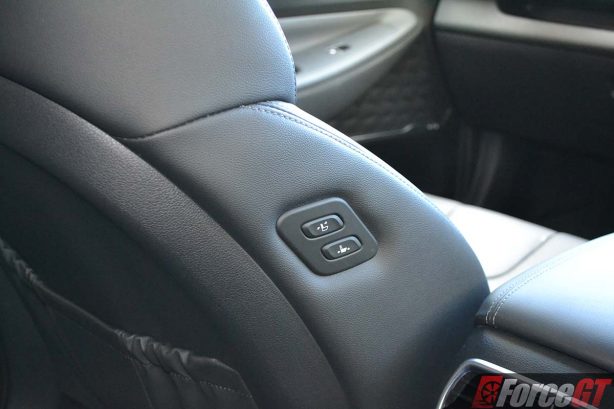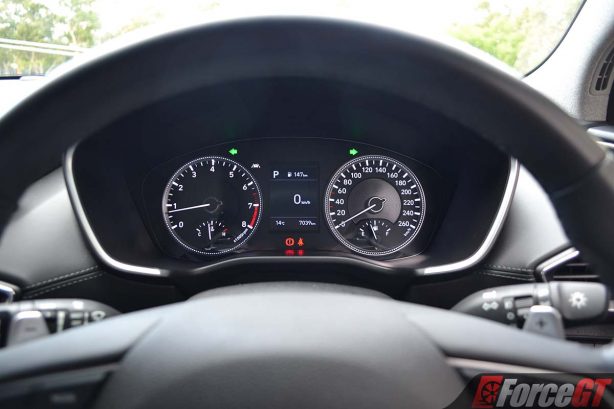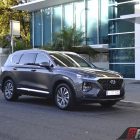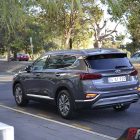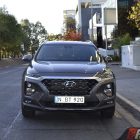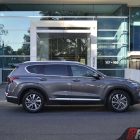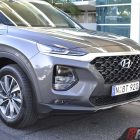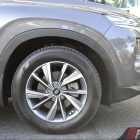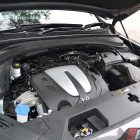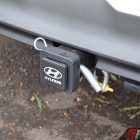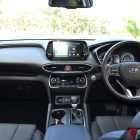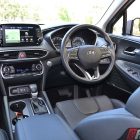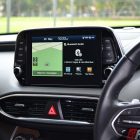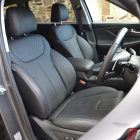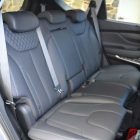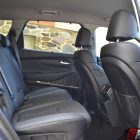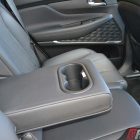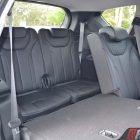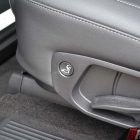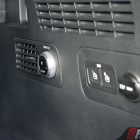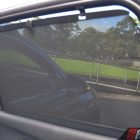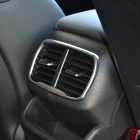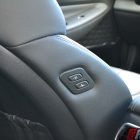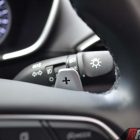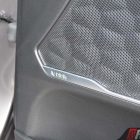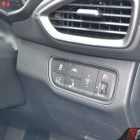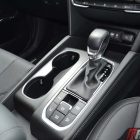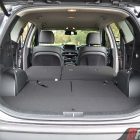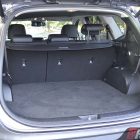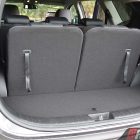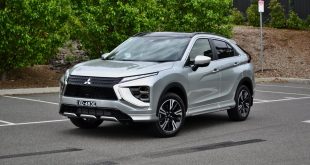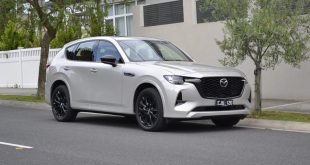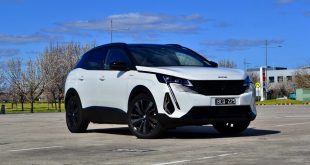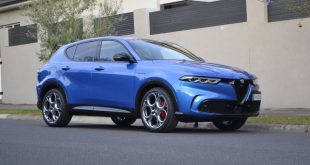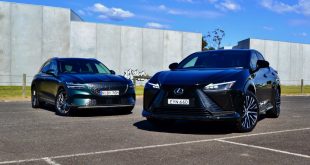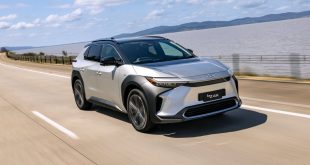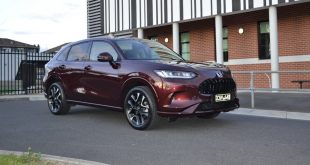V6 power has returned to the Hyundai Santa Fe! Yes, despite its sizeable dimensions, the 7-seater has so far got by with just a 2.4-litre naturally aspirated four-cylinder petrol.
Offered across the three-tier Santa Fe line-up (Active, Elite and Highlander), the V6 petrol can be had from $43,990 in Active guise, followed by the Elite variant on test here at $52,070, while the range-topping Highlander will set you back at $58,630 – all before on-road costs. Hyundai Australia has also recently slotted the Active X between Active and Elite variants at $47,020 plus on-road costs, making the Santa Fe a four-grade range.
The 206kW/336Nm 3.5-litre MPi V6 petrol is the same unit introduced in the previous generation Santa Fe towards the end of its life, and effectively replaces the Theta-II 2.4 GDi four-cylinder petrol, bringing an additional 68kW and 95Nm to the table.
And while the old 2.4 was available with AWD in base Active, the new V6 range is, rather disappointingly, a front-wheel drive only proposition. Those requiring AWD will need to look at the 2.2-litre turbo-diesel Active at $46,000 plus on-roads.
Regardless of the variant however, all 2020 Santa Fe’s come standard with Hyundai’s SmartSense suite of active driver assist features, including Forward Collision-Avoidance Assist, Smart Cruise Control with Stop and Go, Blind-Spot Collision Avoidance Assist and Rear Cross-Traffic Collision Avoidance Assist.
It also boasts Driver Attention Warning, High Beam Assist, Lane Keeping Assist and a novel rear-occupant alert, which tells you if you’ve left someone in the back seats.
Other family-friendly features include a ‘Walk-in’ switch second-row folding function, and a powered tailgate for the Elite and Highlander.
Even in mid-spec Elite, the Santa Fe presents as a much more expensive SUV than its circa $51k price tag suggests, from the quality of the plastics to the clever texturing and fit and finish.
Attention to detail is good, too, from the attractively sculpted pattern on the speaker grilles to the lovely leather-accented dashboard with contrast stitching and pleated headlining, the Santa Fe feels agreeably premium.
And while the Elite misses out on the Highlander’s modern central digital instrument display, its big, old school analogue dials are clear and easy to read.
Nestling in the centre of the dash is an 8.0-inch colour touchscreen, which features DAB+ radio, embedded sat-nav, as well as Apple CarPlay and Android Auto connectivity.
And while the system works well in isolation, compared to the excellent latest generation software on Hyundai’s/Kia’s newer range of vehicles (e.g. the Ioniq), the Santa Fe’s infotainment system feels positively outdated. On a brighter note, the Infiniti sound system great with good bass and clarity.
Storage options are abundant, too, from the deep bin underneath the front central armrest to the slim-line cubby tray (rubber lined to prevent stuff from slipping around) integrated into the dash above the glovebox, the Santa Fe is well catered for everyone.
Each row of seats boast a pair of cupholders, including the third row which comes with their own moulded cupholders, while bottle holders can be found on each door.
Further aback behind the auto tailgate, the boot yields 547 litres with the third row of seats out of the way, expanding to a cavernous 1,625 litres with all seats folded. When all the seats are required however, you are left with a minuscule 130 litres to play with, enough to squeeze a gym bag or two in there.
Interesting, and something of a rarity these days, the Santa Fe comes equipped with a full-size spare mounted underneath the car.
The chunky, electrically adjustable leather-upholstered front seats are beautifully supportive and comfortable, while the second row offers a generous amount of room along with their own air vents and two USB ports. They are equally as comfortable with tilt adjustable seatbacks.
Perhaps to cater for the chauffeured market, the front passenger seat comes with an additional set of electrical adjustment switches on its cabin facing seatback to enable adjustment from those seated in the second row.
As mentioned earlier, entry to the third row of seats is made easy via a ‘Walk-in’ switch that tilts and slides the second row of seats at the push of a button. The second row bases can also be slid forward to liberate more room for those confined to the third row.
They may be ‘third-class’ seats and best reserved for children, the third row does score its own climate control and air vents to make up for it, although the kids might grumble at the lack of USB ports back there.
The extra grunt from the V6 is certainly welcome. Displacing 3.5-litre and packing 206kW and 336Nm of torque, it feels muscular and comes with a sweet sounding engine growl when given the boot.
Power is dispatched to the front wheels via Hyundai’s latest eight-speed automatic, so it isn’t really off-road ready despite the raised ride height.
The auto box is generally smooth although it can hunt around a bit for the right gear on the freeway when going up hill, as well as taking its time to kick down when an overtaking opportunity presents itself.
Tasking just the front wheels to handle 336Nm of torque also means the Santa Fe V6 spins its front wheels at every opportunity especially in the wet. While I never thought I’d say this, but Eco mode seems to suit the V6 best, as it dampens the front wheels’ enthusiasm a tad. On the other hand, Smart mode causes too much wheel spin on take off.
It’s a pity as the V6 brings better driver appeal to the Santa but adding all-wheel drive means extra cost and higher pricing.
The added weight of the two extra cylinders also means the V6 feels slightly nose heavy and pushes wide easily on corners. Otherwise, the car handles relatively well in most situation with good body control and decent steering feel.
Despite it plus-size capacity, the Santa Fe V6 returned a very reasonable 10.7L/100km in combined average over our weeklong test, just 0.1L/100km more than Hyundai’s claim.
And with a sizeable 71-litre fuel tank on board, it means the large seven-seater can theoretically travel approximately 663km before needing to visit the fuel pump.
Around town, the Santa Fe is comfortable and quiet, with a light steering that makes parking easy in tight shopping centre car parks. Its adaptive cruise control – with stop and go – also works well without being overly reactive to turning vehicles like some rivals which slows right down instead of just reducing speed slightly.
The Santa Fe requires a yearly visit or every 15,000km to the dealer. Like Hyundai’s wider SUV range, the Santa Fe is eligible for the company’s Pre-paid Servicing Plan starting from $1,050 for 3 years/up to 45,000km, $1,440 for 4 years/up to 60,000km or a maximum of $1,770 for 5 years/up to 75,000km.
Verdict
Design & Comfort
Performance & Handling
Quality
Economy
Equipment & Features
OUR SCORE
4.1/5
+ Plus
- Muscular V6 petrol
- Feels premium with good attention to detail
- Quiet and comfortable ride
- Decent handling
– Minus
- Front-wheel drive only
- Infotainment system starting to feel old
- Tight third-row seats
Overall
The V6 petrol brings welcome muscle to the Santa Fe petrol range. It’s a smooth unit matched with a sweet sounding engine note. However, the engine and chassis’ full potential is limited by its front-drive only layout. Still, from just $43,990, the Santa Fe’s value is hard to ignore.
2020 Hyundai Santa Fe Elite V6 pricing and specification
| Price (Excluding on-road costs): | From $52,070 As tested: $52,765 Tested options:
|
| Warranty: | 5 years/unlimited kilometres |
| Warranty Customer Assistance: | 1 year roadside |
| Country of Origin: | South Korea |
| Service Intervals: | 12 months/15,000km |
| Engine: | 3.5-litre naturally aspirated, multi-point injection V6 petrol : 206kW @ 6,300rpm, 336Nm @ 5,000rpm |
| Transmission: | 8-speed automatic |
| Drivetrain: | Front-wheel drive |
| Power to Weight Ratio (W/kg): | 114.5 |
| 0-100km/h (seconds): | N/a |
| Combined Fuel Consumption (L/100km) | Claimed: 10.6/Tested: 10.7 |
| Fuel Capacity (L): | 71 |
| RON Rating: | 91 |
| Body: | 5-door SUV, 7-seats |
| Safety: |
|
| Dimensions (L/W/H/W-B) mm: | 4,770/1,890/1,705/2,765 |
| Boot Space (min/max) (L): | 547/1,625 |
| Turning Circle Between Kerbs: | 11.42 |
| Ground Clearance: | 185 |
| Approach Angle: | 18.5 |
| Departure Angle: | 21.2 |
| Breakover Angle: | 20.7 |
| Kerb Weight (kg): | 1,845 |
| Towing Capacity (kg): | Braked: 2,000/Unbraked: 750 |
| Entertainment: |
|
Competitors: Kia Sorento, Mazda CX-9, Toyota Kluger, Mitsubishi Outlander
 ForceGT.com Car News, Car Reviews, Video Reviews, Tuning and much more.
ForceGT.com Car News, Car Reviews, Video Reviews, Tuning and much more. 